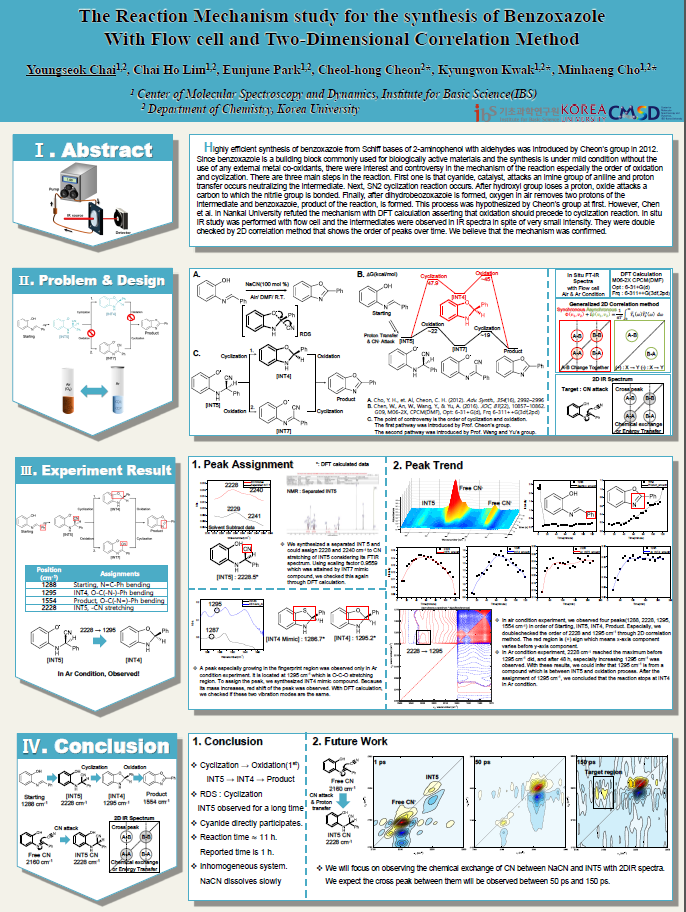mainmenu
The Reaction Mechanism study for the synthesis of Benzoxazole With Flow cell and Two-Dimensional Correlation Method
2019 123rd KCS

Highly efficient synthesis of benzoxazole from Schiff bases of 2-aminophenol with aldehydes was introduced by Cheon’s group in 2012. Since benzoxazole is a building block commonly used for biologically active materials and the synthesis is under mild condition without the use of any external metal co-oxidants, there were interest and controversy in the mechanism of the reaction especially the order of oxidation and cyclization. There are three main steps in the reaction. First one is that cyanide, catalyst, attacks an imine group of aniline and proton transfer occurs neutralizing the intermediate. Next, SN2 cyclization reaction occurs. After hydroxyl group loses a proton, oxide attacks a carbon to which the nitrile group is bonded. Finally, after dihydrobeozoxazole is formed, oxygen in air removes two protons of the intermediate and benzoxazole, product of the reaction, is formed. This process was hypothesized by Cheon’s group at first. However, Chen et al. in Nankai University refuted the mechanism with DFT calculation asserting that oxidation should precede to cyclization reaction. In situ IR study was performed with flow cell and the intermediates were observed in IR spectra in spite of very small intensity. They were double checked by 2D correlation method that shows the order of peaks over time. We believe that the mechanism was confirmed.


